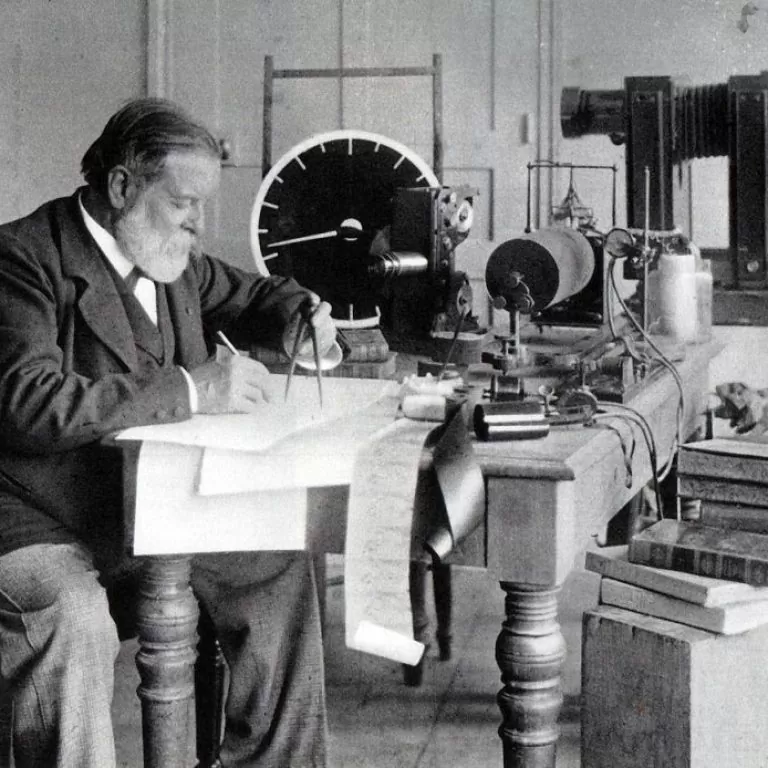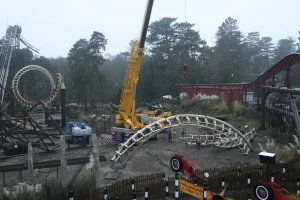
News Chronophotography: the early predecessor to time-lapse videos

Capturing history in the making: the demolition of Alton Tower’s iconic Corkscrew roller coaster.
It might be the New Year, but the old has been kept very much alive recently.
Our previous two blogs have had a somewhat nostalgic feel about them, with Polaroid making a comeback in the instant-print market and highlighting the importance of the $1 Kodak Brownie.
Taking a break from the origins of affordable cameras and everyday photography, where did time-lapse video originate?
Developing a great understanding of natural movement has long been a fascination of scientists, with chronophotography considered to be the earliest form. A bit of a mouthful, perhaps, but breaking the word down gives a sense of what this Victorian-era technique aimed to do. “Chrono” is the Greek word for time, so the most literal definition of the phrase is “time photography”.
The chronophotography technique involved taking a series of still pictures over a pre-determined amount of time (very similar to modern day time-lapse), then arranging them into a single photograph for analysis.
The analysis itself would often be a case of spot the (obvious) difference. As a predecessor to cinematography, it was arguably the only way to study changes in an animal’s body as it ran, flew or moved.
Using multiple cameras
Eadweard Muybridge’s 1878 series of photographs, “Sallie Gardner at a Gallop”, is arguably the first, well-known use of chronophotography. Although today it might be considered a time-lapse video, as the images have been stitched together into an infinite loop, the reasoning behind the photos was quintessentially chronophotography-based.
Muybridge was hired by Californian Governor and racehorse owner Leland Stanford to confirm whether all four hooves of a horse are on or off the ground mid-gallop. It took a series of cameras, cleverly placed by Muybridge along a stretch of Stanford’s farm, and an awful lot of tripwire. As the horse passed through each wire, it would trigger the shutter the camera they were hooked to, thus taking 24 photographs – 69cm apart – of the passing mare in succession.
And for the first couple of years after the pictures were taken they remained still images, becoming the first true chronophotograph.
Using just one negative
Whilst printing the series onto one sheet of photographic paper created a continuous chronophotograph, reproduction technology was still in the early days of development, so this was not necessarily possible.
Étienne-Jules Marey, who was at the forefront of chronophotography development in the late 1860s, trialled many camera designs in the hope of capturing multiple pictures on one slide.
His 1882 invention used a spring and motor-driven shutter to pass a photographic plate in front of the lens. Thus, a small object moving quickly could be captured on a single plate, with each movement side-by-side.
Using time-lapse today
Early pioneers and photographers preferred to use Muybridge’s uncomplicated approach, rather than relying on Marey’s system to stop and start a camera in quick succession.
But today time-lapsers use a single camera, usually relying on an external intervalometer to capture the pictures. These devices, which essentially tell the camera when to take a photo, have roots as far back as 1920. John Ott retrofitted a paperclip and kitchen timer to his camera, which allowed him to take pictures regular intervals. Once developed, the pictures showed flowers blooming.
The use of time-lapse has also developed from flowers and animals to essentially anything, such as on construction site monitoring, enhancements to television and film, and as marketing materials for major retail chains, to name but a few.
After almost 150 years of inventions and innovations, Muybridge’s and Marey’s pioneering work is benefitting millions. Could you be the next?